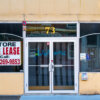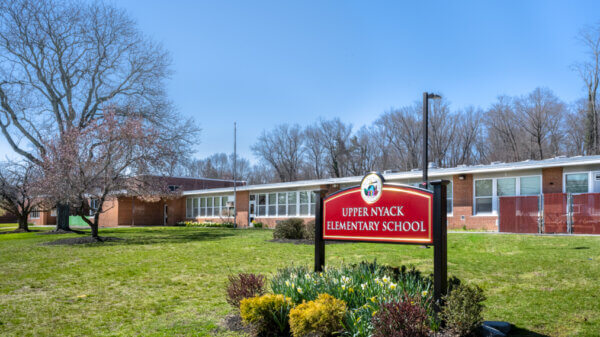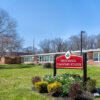Aromas of peach, apple, and melon reached the drawing rooms of Nyack’s mid-century Victorian homes during springtime in the 1860s when thousands of local grapevines flowered. By late summer, rows of grape-laden vines marched in rows down Nyack’s steep hills to the Hudson River.

In the middle of the 19th century, the lower Hudson Valley was one of the largest grape-growing and wine-making regions in America and a home for viticultural science. Nyack became a grape growing mecca, providing grapes for New York City dinner tables and for wine makers. Some Nyack villagers might be delighted to know that their backyard was once a vineyard.
Hudson River Valley Vineyards
The Vikings named the North American coast Vinland for the flourishing native grapes they found 1,000 years ago. Unfortunately, the native American grapes, muscadine, scuppernong, and the vitus labrusca varietals, make a foxy, unappealing wine. American vines imported into Europe in the 1860s infected the popular fine-wine grapes known as vitus vinifera with a fatal virus. To solve the problem, vitus vinefera was grafted to American root stock.

The Hudson River Valley, like the Finger Lakes wine region, has a mellow climate due to the influence of large bodies of water. Temperatures 150 years ago were more extreme, and vitus vinifera was not hardy in our region. New hybrids crossing native stock and vinifera were able to withstand harsh northern winters. There was no chardonnay or cabernet sauvignon back in early America.
California, the Ohio River Valley, Ulster County, and the Finger Lakes all claim title to America’s first wine making, but the oldest continuous operating winery in America is the Brotherhood winery in Orange County that opened in 1839. Modern grape growing is an outgrowth of local viticulture. But for timing, chance, and change, Nyack could today be a go-to wine destination like Napa Valley.
Dr. Underhill’s Winery at Croton Point
In 1804, the Underhill family acquired property on Croton Point and established a farm and grist mill. Robert Underhill, the second generation of Underhills, was a renaissance man. He became a medical doctor, an agriculture expert, farmer, wine maker, and one of the early investors in NYC’s elevated railway. Grapes became his passion, and his vineyard grew to 75 acres, the largest vineyard in America at the time.

Underhill started out trying to grow French hybrids, Vitus vinifera, but they died after a few years. He went on to grow and invent a number of hybrid grapes that combined hardiness with the complexity of European grapes. Two of his hybrids were the Croton grape that thrived in sandy soils and Senasqua, a hybrid of Cinsault and Concord. Most successful, however, were his plantings of Catawba, a red grape hybrid, and Isabella, a near-black grape hybrid. In addition to grapes, he grew pears and quince that ripened earlier in the year. He won awards for all of his fruits at the American Institute of the City of New York.

In 1850, Underhill built a winery to go along with his vineyard and his landmark Italian villa on Croton Bay. Etchings of the villa and vineyards appeared in magazines and tour books of the times. Underhill used underground caves to age his wine. Underhill Distributors opened in Astor Place, in New York City. The wine was popular, especially so during Christmas time. The New York Times noted the wine’s “peculiar excellence consists in the fact that they are all pure, and neither drugged, liquored, or watered.”
Brotherhood winery
In 1837, Jean Jaques planted a vineyard in Washingtonville, and by 1837 he was fermenting wine in cellars on the property, becoming the first winery on the west side of the lower Hudson valley. The Jaques Brothers marketed wine under the Blooming Grove and Jacques Brothers Winery labels.

Across the river, a Duchess County utopian community known for claiming that God was bisexual, made wine that attracted a wide market. Emerson & Son, New York City wine merchants, bought both the Duchess County winery and Jaques Brothers. They named the new winery in Washingtonville Brotherhood. Brotherhood has remained in continuous operation, including during prohibition when they made sacramental wines. It is the oldest continuously operating winery in America.
Nyack vineyards
Nyack farmers learned from Underhill’s success. Grapes proved to be a better cash crop than grains. Nyack farmers had a ready market in NYC easily reached from local steamboat docks. By the start of the Civil War, more than 20,000 vines were growing in the Nyacks. Vines were spaced in rows about 10-12 feet apart, with each vine 8-12 feet from its neighbor. Modern vineyards are much denser under the theory that the fruit will be more concentrated.

Then as now, vines responded better to a more “stressed” environment. Nyack’s thin and hard rocky soil over gneiss makes an interesting grape “terroir.” Most wine growers hard-pruned vines early in the year, some removed leaves to promote better ripening, and some removed clusters to promote growth in other clusters. These practices persist in modern vineyards. Vines were supported by posts with 2-4 wooden cross slats. Some vines were trellised with wire and slats.
The DePew & Lydecker “Downtown” Vineyards
It’s likely that Peter Depew planted the first vineyard in Nyack, near his house. The Depew house is a landmark Italianate-style house that still stands across from Memorial Park on Piermont Ave. Vineyards clustered in the field across Piermont Ave. where the upper part of Memorial Park is now located and in the block now bounded by Hudson, Piermont, Cedar Hill Avenues, and Broadway. Peter and his son Tunis also offered grapevines for sale to farmers. Some 20,000 young vines of different varieties grew in the south block. Later, Tunis established greenhouses to grow commercial roses.

Tunis was the resident expert in grape growing. He advised growers to opt for quality vines rather than the “foxy trash” of native varieties. His big seller was the early maturing Isabella. He also offered Hartford, Iona, Concord, and Diana grapes that provided continuously maturing fruit over several months. He recommended planting in any “good corn ground”, or well drained, rich soil. Vineyards did best on south or southeast facing slopes in rows running north and south so each side received sunlight.

Just down the street from the DePew farm, Isaac S. Lydecker had an extensive vineyard on his property at the foot of Piermont Avenue and Main Street facing Gedney St. and the Nyack docks.

The vineyards must have been quite a sight to those arriving by steamboat, stretching up slope from the river. The view from the DePew observatory atop their house also must have been amazing, with the river as vineyard background.
Upper Nyack vineyards
With the exception of a small commercial district supported by boat building near lower Castle Heights Ave., Upper Nyack was populated by farms ranging from 170 to 30 acres. By the Civil War, most had replaced cash grain crops with grapes and fruit trees.

The most southerly vineyard was Garret Sarvent’s near the village border. Vineyards ran behind his house, which still stands (although much altered) at 311 N. Broadway on the slope to the river. Sarvent interplanted his vines with potatoes in a vineyard on the west side of Broadway. After potato harvest, Sarvent plowed under remaining organic matter. Sarvent also farmed a two-acre raspberry patch. One year he delivered 5,500 baskets of raspberries to market.
Heading north, John Palmer, whose family donated the land for the Old Stone Meeting House, had some 1200 vines, and the Hart brothers had vines running up the slope.

One of the larger of the vineyards (173 acres) was that of George Green, son of John Green, who, like the DePews, built an riverfront Italianate villa. Green’s house fronted North Broadway near the foot of Lexow Ave. Grapes grew on the slope behind the house and west of Broadway, south of Lexow Ave, on the slopes up to 9W. Separately, he had apple and pear orchards. Green was known for interplanting carrots in rows between young vines before they bore fruit.
Jesse Blackfan, Frederick Korn, T. Grunenthal, and William Stillwell also had vineyards in Upper Nyack. Near Hook Mountain, Garret Snedeker interplanted corn, cabbage, and pumpkins with his grapes. Jacob Voorhis had the most northerly vineyard on his 52-acre farm just below Hook Mt.
Central Nyack Vineyards
Until 1890, Central Nyack was called West Nyack (West Nyack was known as Clarksville). Garret Onderdonk had a vineyard south of the Nyack Turnpike (Rt. 59) near its original toll booth, across from the Nyack Rural Cemetery. Onderdonk’s 600 fig trees next to the vines were famous for their size. Victor and John Waldron, Isaac Dutcher, and A.W. Talman all had vineyards located in the vicinity of Oak Hill Cemetery.

South Nyack
Only one vineyard is recorded in South Nyack. Michael Cornelison had a vineyard on a flat area west of Piermont Ave. near Mansfield Ave, opposite the Rockland Female Institute. The area was not well drained and the vines were not as successful as those grown on slopes.
Local wine making
Sadly, we never had a commercial Nyack wine. Some farmers made wine for home use as evidenced by prizes given at summer fairs. In Cole’s History of Rockland County, he notes that 450 gallons (about 200 cases) of wine were made in Rockland County around this time. Grapes are hard to grow, and as the markets became more competitive, grapes were replaced by greenhouses growing commercial roses. Rich “gentlemen farmers” bought up land and built second homes along the river. Our chance to become a future Napa Valley slipped away.
Making Wine At Home
In keeping with the legacy of viticulture, a few villagers made wine at home from vines planted in their yards. Win Perry, Upper Nyack Village Historian, tells that in the 1920s, Italian immigrants found the steep slopes and small homes of the Van Houten’s Landing neighborhood affordable and reminiscent of hill towns in the old country. Domenick Lofaro, Nicolo Lodico, Henry Colarelli, Luigi Salamone, and others all had a few vines in their tiny backyards, and had basement facilities for fermenting and aging red wine. Win has a vine he received from Mr. Lofaro around 1965, along with a delicious sample of his wine.

In 1949, a winery opened on the southerly slopes of High Tor Mountain, bringing back briefly the era of Nyack’s vineyards. The story of High Tor Vineyards, which lasted until the late 1980s, is one for another time. For now, we can drift back to when the smell of grape flowers filled the verandas and open windows of Victorian Nyack, when steamboat smoke drifted on the river, and new green vine leaves glistened in the morning sun.
Michael Hays is a 36-year resident of the Nyacks. Hays grew up the son of a professor and nurse in Champaign, Illinois. He has recently retired from a long career in educational publishing with Prentice-Hall and McGraw-Hill. He is an avid cyclist, amateur historian and photographer, gardener, and dog walker. Hays has enjoyed more years than he cares to count with his beautiful companion, Bernie Richey. You can follow him on Instagram as UpperNyackMike








